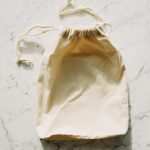When you consider microsuede, you might wonder about its stretchiness and how that impacts its use in various applications. While it does offer some elasticity, typically around 10-15%, it's not as flexible as fabrics like spandex. This moderate stretchiness can be essential for maintaining the shape and durability of your upholstery or clothing. But what factors influence this elasticity, and how does microsuede compare to other fabrics? Understanding these nuances could change how you view this versatile material.
Table of Contents
Key Takeaways
- Microsuede exhibits moderate stretch of 10-15%, allowing flexibility without compromising its structural integrity.
- The fabric's polyester content generally reduces stretch, while higher polyurethane levels enhance elasticity.
- Tighter weaves in microsuede contribute to less stretchability compared to other fabrics.
- Microsuede maintains its shape well, making it suitable for upholstery and clothing without excessive give.
Understanding Microsuede Fabric
Microsuede is a synthetic fabric that mimics the softness and texture of natural suede while offering increased durability and stain resistance. You'll find that this fabric is commonly used in upholstery, clothing, and accessories, making it a versatile choice for various applications.
One of the reasons microsuede is so popular is its ability to withstand wear and tear better than traditional suede, which can be sensitive to moisture and staining. When you touch microsuede, you'll notice its plush feel, which adds a luxurious touch to any item. It's often easy to clean, as most spills can be wiped away without leaving a mark.
Unlike genuine suede, microsuede resists fading, ensuring that your items maintain their color and appearance over time.
You should also consider the environmental aspect of microsuede. Being a synthetic material, it's often made from recycled fibers, making it a somewhat eco-friendly option.
Composition of Microsuede
When you look at microsuede, it's crucial to understand its composition.
You'll find that the material breakdown and fiber structure play a significant role in its durability and flexibility.
Let's explore how these elements contribute to the overall fabric performance.
Material Composition Breakdown
This synthetic fabric primarily consists of polyester, which gives it a soft texture and durability. Polyester fibers are known for their resistance to shrinking and stretching, making microsuede a practical choice for various applications.
You'll find that microsuede often combines polyester with a backing material, usually made of a blend of polyurethane or other synthetic materials. This combination enhances the fabric's strength while maintaining its lightweight feel.
In addition to polyester, some microsuede fabrics may include a small percentage of other fibers, such as nylon or rayon. These fibers can contribute to the overall feel and performance of the fabric, adding characteristics like breathability and water resistance.
When considering microsuede for upholstery or clothing, it's also essential to look at the manufacturing process, as this can affect the fabric's finish and texture.
Understanding the material composition breakdown helps you appreciate microsuede's versatility. Its ability to mimic the look and feel of natural suede, without the associated maintenance, makes it an attractive option for many projects.
Fiber Structure Analysis
The fiber structure of microsuede plays a crucial role in its softness and durability, resulting from tightly woven polyester fibers that create a plush surface. When you touch microsuede, you'll immediately notice its velvety feel, which comes from the fine denier fibers that are often much thinner than traditional suede. This unique composition allows for a high-density fabric, contributing to its luxurious appearance.
You might also find that microsuede fibers are often brushed to enhance their softness and create a rich texture. This brushing process not only provides a delightful tactile experience but also helps in achieving a more even color across the fabric. The fibers themselves are hydrophobic, meaning they repel water, which helps in maintaining the fabric's integrity over time.
It's worth noting that while the polyester fibers aren't inherently stretchy, their tight weave can provide a slight give under pressure. This gives you a sense of comfort and adaptability when using microsuede in various applications, such as upholstery or clothing. Understanding this fiber structure can help you appreciate why microsuede remains a popular choice for many textile uses.
Durability and Flexibility
Microsuede boasts impressive durability and flexibility due to its high-quality polyester composition, making it a reliable choice for various applications. This synthetic fabric has become popular in furniture, clothing, and automotive interiors because it withstands wear and tear while maintaining a soft, luxurious feel.
Here are three key factors that contribute to its durability and flexibility:
- Resilience: Microsuede is designed to resist fraying, fading, and staining, ensuring it looks good even after extended use.
- Breathability: The polyester fibers allow air circulation, preventing moisture buildup, which can lead to mold and mildew. This feature helps maintain its integrity over time.
- Easy Maintenance: You can easily clean microsuede with mild soap and water, making it practical for high-traffic areas.
Elasticity and Stretch Factors
When considering microsuede, you'll want to think about how its material composition affects its elasticity.
Different blends can significantly impact how stretchy the fabric is.
To truly understand this, looking at stretch test results can provide valuable insights into its performance.
Material Composition Influence
Understanding how the blend of polyester and polyurethane in microsuede affects its elasticity can help you choose the right fabric for your needs. This combination significantly influences how stretchy and durable the microsuede will be. Here are three key factors to consider:
- Polyester Content: Polyester fibers provide strength and resilience. The higher the polyester content, the less stretch you might get, but it offers greater durability.
- Polyurethane Percentage: This component is crucial for elasticity. A higher percentage of polyurethane typically means better stretch, allowing the fabric to conform to shapes and movements more easily.
- Fabric Construction: The way microsuede is woven or knitted can also impact its elasticity. A tighter weave may reduce stretchability, while a looser construction might enhance flexibility and comfort.
Stretch Test Results
To gauge how stretchy microsuede really is, various stretch tests reveal its elasticity and the factors that influence it. You'll find that microsuede typically exhibits a moderate level of stretch, thanks to its polyester composition. When you apply pressure, you might notice the fabric stretching slightly, but it tends to return to its original shape quite effectively.
In tests, microsuede stretches about 10-15% without losing its structure. Factors like the thickness and weave of the fabric can affect these results. Thicker microsuede tends to be less stretchy, while a finer weave can enhance flexibility.
You might also consider the amount of tension applied during stretching. If you pull gently, you'll see a bit of give, but excessive force can lead to permanent deformation.
It's important to remember that while microsuede has some elasticity, it's not as stretchy as materials like spandex or jersey. This characteristic makes it suitable for upholstery and clothing, where a balance of comfort and form is essential.
Ultimately, the elasticity of microsuede means it can withstand everyday use while maintaining its appealing look and feel.
Microsuede Vs. Other Fabrics
Microsuede stands out among fabrics for its unique blend of softness, durability, and ease of maintenance. When comparing microsuede to other materials, you'll notice several key differences that can help you decide which is best for your needs.
- Vs. Cotton: While cotton is soft and breathable, it often requires more maintenance. Microsuede, on the other hand, is stain-resistant and easier to clean, making it a practical choice for households with kids or pets.
- Vs. Leather: Leather offers luxury and durability, but it can be expensive and may require special care. Microsuede mimics the look and feel of leather at a fraction of the cost and is more forgiving in terms of upkeep.
- Vs. Velvet: Velvet is plush and visually appealing, but it can be high-maintenance. Microsuede provides similar aesthetics with less risk of snagging and easier cleaning options.
Practical Applications of Microsuede
You'll find microsuede used in a variety of practical applications, from upholstery and clothing to accessories and home décor. This versatile fabric is popular for furniture coverings, as it combines durability with a soft, luxurious feel. When you choose microsuede for your couch or chairs, you're opting for a material that stands up to wear while maintaining its aesthetic appeal.
In clothing, microsuede is often found in jackets, skirts, and even footwear. Its smooth texture and rich colors make it a favorite for fashion-forward individuals. You'll appreciate how it mimics the look of genuine suede but offers greater ease of care.
Accessories like handbags and wallets frequently feature microsuede, as it can lend a touch of elegance without the hefty price tag. Additionally, you may spot it in various home décor items, such as throw pillows and blankets, enhancing your space with softness and style.
Care and Maintenance Tips
Caring for microsuede is essential to preserve its luxurious appearance and ensure it lasts for years. Proper maintenance not only keeps it looking great but also helps prevent damage.
Here are three key care tips to follow:
- Regular Cleaning: Use a soft brush or a vacuum with an upholstery attachment to remove dust and debris. This prevents dirt from embedding into the fabric.
- Spot Cleaning: For stains, act quickly! Blot the area with a clean, damp cloth and mild soap. Avoid rubbing, as this can damage the fabric's fibers. If needed, use a specialized microsuede cleaner.
- Avoid Water Exposure: Microsuede can absorb water, leading to stains or damage. Keep it away from spills and moisture. If it does get wet, gently blot with a dry cloth and allow it to air dry away from direct heat.
Final Thoughts on Elasticity
When considering the elasticity of microsuede, it's important to note that while it offers some flexibility, it doesn't stretch like elastic materials.
Instead, microsuede maintains its shape well, making it a popular choice for upholstery and clothing. You'll find that it can conform to various shapes without losing its form, which is one of its standout qualities.
However, if you're looking for a fabric that stretches significantly, microsuede mightn't meet those expectations. It's designed to provide comfort and durability, but its elasticity is limited compared to spandex or similar materials.
This characteristic makes it ideal for items like cushions or jackets, where you want a snug fit without excessive give.
Frequently Asked Questions
Can Microsuede Be Used for Upholstery Projects?
Yes, you can definitely use microsuede for upholstery projects. It's durable, easy to clean, and looks great. Just ensure it fits your design needs, and you'll love the results it brings to your space.
Is Microsuede Suitable for Outdoor Furniture?
Microsuede isn't ideal for outdoor furniture since it can absorb moisture and fade in sunlight. If you're looking for durable, weather-resistant fabric, consider alternatives specifically designed for outdoor use to ensure longevity and comfort.
How Does Microsuede Compare to Real Suede?
When comparing microsuede to real suede, you'll find microsuede's texture is softer and more resistant to stains. However, real suede offers a more luxurious feel, though it requires more care and maintenance.
Does Microsuede Fade in Sunlight?
Yes, microsuede can fade in sunlight. If you want to protect your fabric, consider placing it away from direct sunlight or using window treatments to minimize exposure and maintain its vibrant color over time.
Can Microsuede Be Dyed or Printed On?
Yes, you can dye or print on microsuede, but it's essential to use fabric-specific dyes. Test a small area first to ensure the color adheres well and achieves the desired look without damaging the material.
- How Does Ring Spun Cotton Affect Garment Fit and Shape Retention? - August 13, 2024
- What Are the Challenges in Producing Ring Spun Cotton? - August 13, 2024
- Is Ring Spun Cotton Suitable for Plus-Size Clothing? - August 13, 2024







